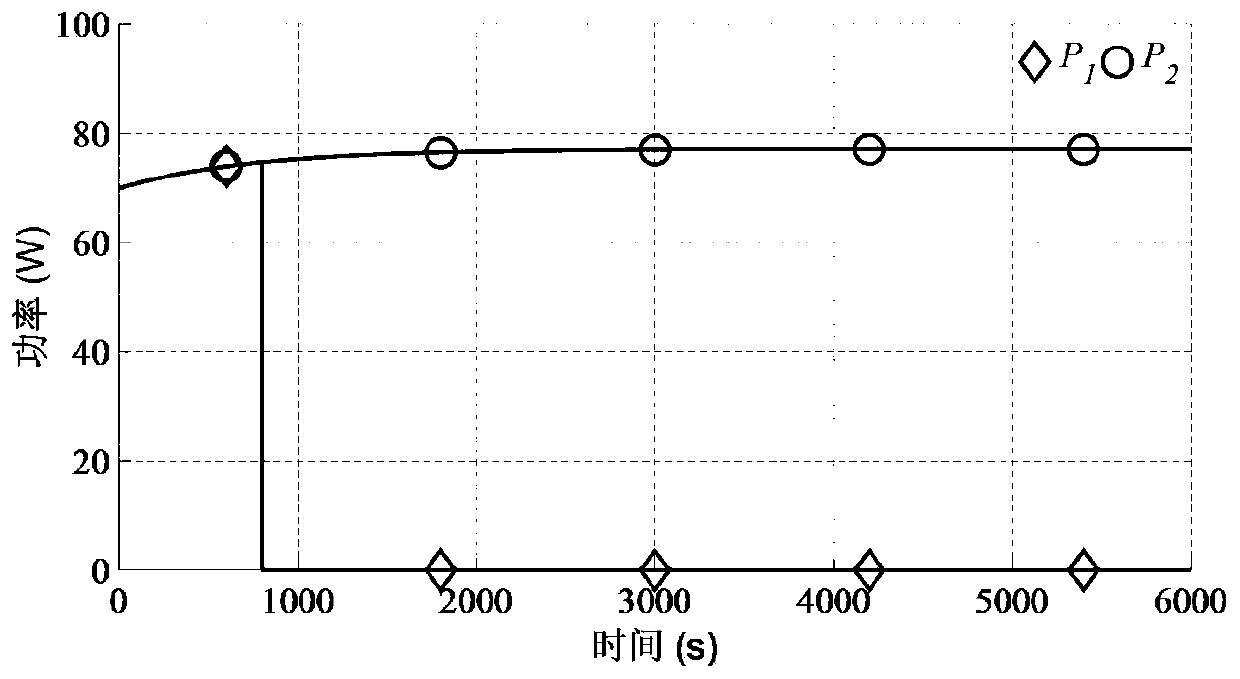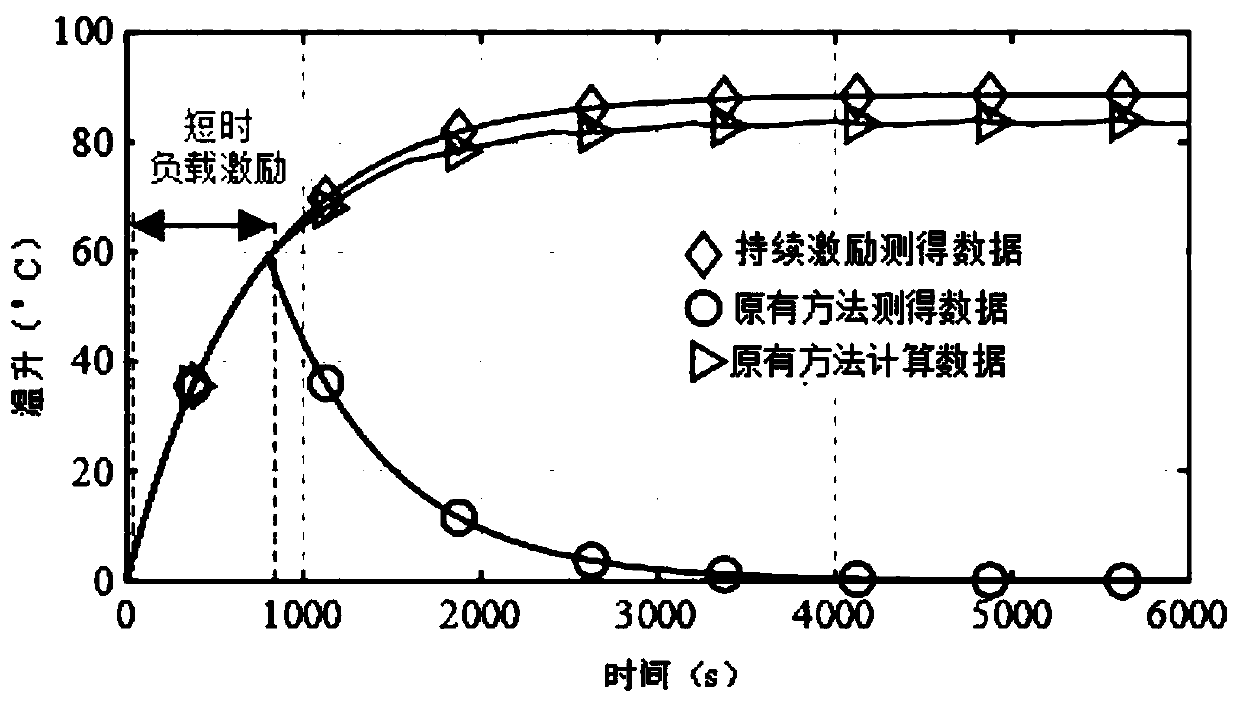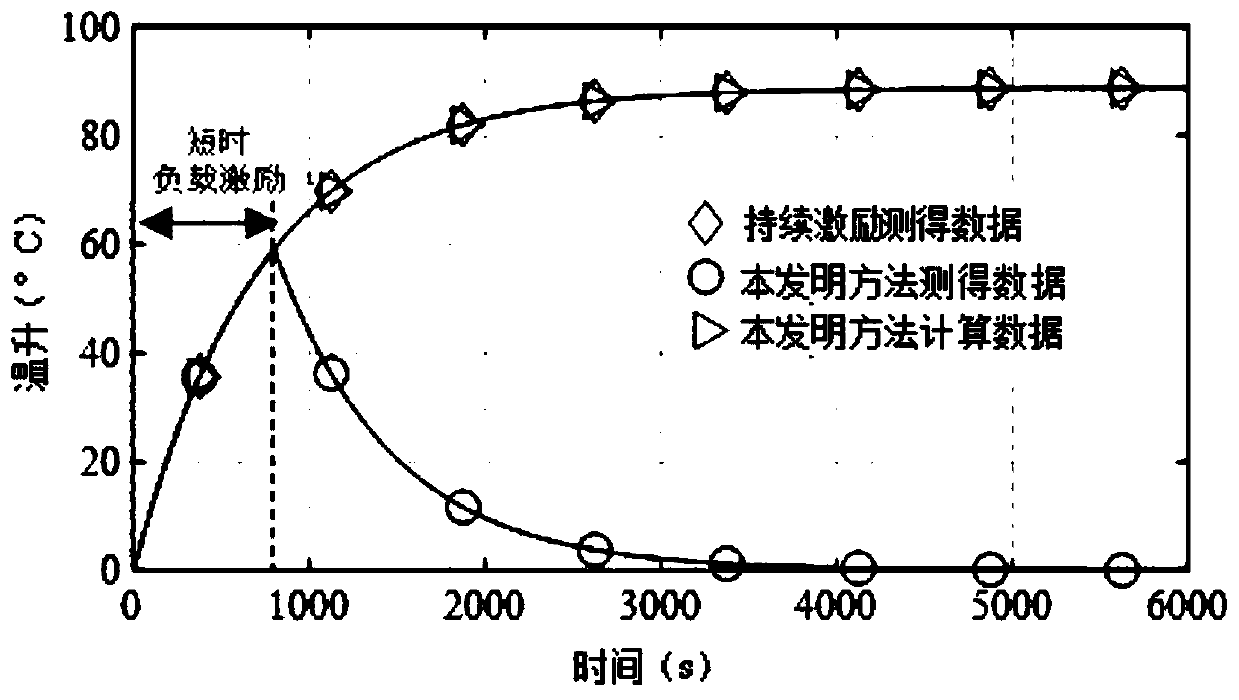Temperature rise equivalent test method capable of solving temperature rise response under any load excitation
A technology of equivalent testing and temperature rise, applied in the field of efficiency testing, to achieve the effect of reducing energy consumption, avoiding damage, and simplifying the calculation process
- Summary
- Abstract
- Description
- Claims
- Application Information
AI Technical Summary
Problems solved by technology
Method used
Image
Examples
specific Embodiment approach 1
[0029] Specific implementation mode 1: This implementation mode discloses a temperature rise equivalent test method that can obtain the temperature rise response under arbitrary load excitation. The specific steps of the method are as follows:
[0030] Step 1: The motor is loaded with any given variable load state, and the power loss value P of the motor that changes with time is recorded during the entire loading test process 1 (t) and motor temperature rise T R1 (t), the temperature rise is the difference between the temperature of the tested motor components and the ambient temperature; the measurement data is recorded in a discrete form, and the sampling time of the data record is τ, then P 1 (t) and T R1 (t) The corresponding discrete sequence is P 1 (n) and T R1 (n), where n is the serial number of the discrete data, n=0,1,2,3,...; the data with the serial number n is the value at the time nτ; the loss corresponding to the loading start time is recorded as u 0 , name...
Embodiment 1
[0038] The object of embodiment 1 is a first-order heat transfer object, and the test load excitation is short-term excitation. This embodiment discloses a temperature rise equivalent test method that can obtain the temperature rise response under arbitrary load excitation, and the steps of the method are as follows:
[0039] Step 1: The motor is loaded with any given variable load state, and the motor loss power value P that changes with time t is recorded during the entire loading test process 1 (t) and motor temperature rise T R1 (t), the temperature rise is the difference between the temperature of the tested motor part and the ambient temperature; the measurement data is recorded in a discrete form, and the sampling time of the data record is τ=0.1s, then P 1 (t) and T R1 (t) The corresponding discrete sequence is P 1 (n) with T R1 (n), where n is the serial number of discrete data, n=0,1,2,3,...,60000, the data with serial number n is the value at time nτ; the corres...
Embodiment 2
[0061] The object of embodiment 2 is a first-order heat transfer object, and the test load excitation is long-time excitation. This embodiment discloses a temperature rise equivalent test method that can obtain the temperature rise response under arbitrary load excitation, and the steps of the method are as follows:
[0062] Step 1: The motor is loaded with any given variable load state, and the motor loss power value P that changes with time t is recorded during the entire loading test process 1 (t) and motor temperature rise T R1 (t), the temperature rise is the difference between the temperature of the tested motor components and the ambient temperature. Record measurement data in discrete form, the sampling time of data recording is τ=0.01s, then P 1 (t) and T R1 (t) The corresponding discrete sequence is P 1 (n) with T R1 (n), where n is the serial number of discrete data, n=0,1,2,3,...,2000, the data with serial number n is the value at time nτ; the corresponding lo...
PUM
 Login to View More
Login to View More Abstract
Description
Claims
Application Information
 Login to View More
Login to View More - R&D
- Intellectual Property
- Life Sciences
- Materials
- Tech Scout
- Unparalleled Data Quality
- Higher Quality Content
- 60% Fewer Hallucinations
Browse by: Latest US Patents, China's latest patents, Technical Efficacy Thesaurus, Application Domain, Technology Topic, Popular Technical Reports.
© 2025 PatSnap. All rights reserved.Legal|Privacy policy|Modern Slavery Act Transparency Statement|Sitemap|About US| Contact US: help@patsnap.com



